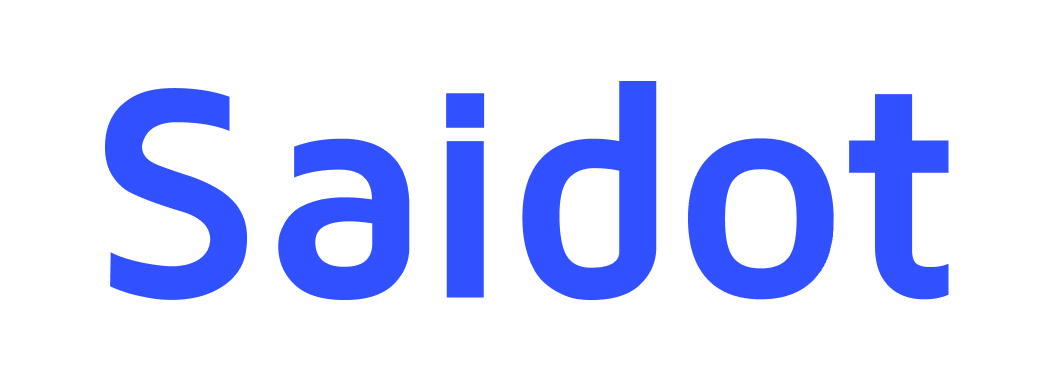AI system lifecycle management
Using Saidot, you will be able to
Take into use the standard AI lifecycle model to guide how your AI systems evolve from initiation to retirement.
Record AI system lifecycle stage transitions transparently, ensuring traceability for all key decisions along the lifecycle.
Follow a clear AI system lifecycle management process with consistent governance activities at every stage.
AI Lifecycle Model
The AI System Lifecycle model provides a standardised approach for defining how AI systems evolve from initiation to retirement. It helps build and govern AI systems more effectively and efficiently, maintaining consistency across the entire AI portfolio. We have adopted an AI lifecycle model based on the ISO 22989 standard as our reference lifecycle model, which provides both clarity and a good fit for various industries and AI use contexts. Using Saidot, you can record your system progress throughout the lifecycle, maintaining traceability for stage transitions.
Lifecycle stage | Description |
|---|---|
Initiation | The initiation stage determines why an AI system needs to be developed and involves decisions that lead to the design and development stage. Initial evaluation of AI system risk and impact levels helps assign systems with rightly sized governance tasks. The decisions of the stage can be revisited during the life cycle as new information is discovered in later stages. |
Design & development | The design and development stage creates and delivers an AI system that is ready for verification and validation. During this stage, stakeholders should ensure the AI system fulfils its intended purpose and objectives, requirements, and other targets identified during the initiation stage. In this stage, the AI system goes through a risk management process where risks are identified, evaluated and treated in a way that leads to an acceptable residual risk level. |
Verification & validation | The verification and validation stage ensures that the AI system works according to the requirements set to it and meets objectives. Such reviews can be conducted by internal reviewers, external auditors, or both of them. The stage also includes approval, where the AI system is approved as functionally complete, at an acceptable quality level, and ready to be deployed. |
Deployment | The deployment stage happens when the AI system is installed, released or configured for operation in its target environment. During this stage, users are provided with the necessary capabilities and support to use the system according to its intended use and instructions. At this stage, continuous monitoring and oversight capabilities are enabled to support risk monitoring and treatment, as well as efficient incident resolution and redress. |
Operation & monitoring | During the operation and monitoring stage, the AI system is operating and available for use. Furthermore, the system’s normal operation is monitored, and necessary actions like updates, repair, and support are taken to ensure AI system quality. Based on insights gained from monitoring, risk treatment plans may need to be updated. |
Re-evaluation | The re-evaluation stage refers to a reassessment of the AI system based on time-based triggers, or triggers learned through continuous monitoring of the system. Re-evaluation can contain an evaluation of the system’s impact, performance, as well as events identified through continuous risk monitoring. The re-evaluation typically ends in recorded re-approval of the system. |
Retirement | The retirement stage occurs when the AI system becomes obsolete to the extent that repairs and updates are not enough to address new requirements. This can lead to the system being decommissioned or replaced. In this stage, the system is archived in the archived systems inventory. |
Source: Adapted based on ISO/IEC 22989:2022, Information technology — Artificial intelligence — Artificial intelligence concepts and terminology.
Process
AI system lifecycle management is not a one-time task but a continuous process. The process provides a common structure for identifying the relevant governance tasks at any given lifecycle phase. The relevant tasks may vary depending on the system's overall risk and impact level, the organisational role, or based on your organisation’s custom requirements, for which users can customise the lifecycle process.
Lifecycle stage | Stage type | Standard lifecycle tasks |
|---|---|---|
Initiation | STANDARD |
|
Design & development | STANDARD |
|
Verification & validation | OPTIONAL |
|
Deployment | STANDARD |
|
Operation & monitoring | STANDARD |
|
Re-evaluation | OPTIONAL |
|
Retirement | STANDARD |
|
Sources: Saidot proprietary model designed based on ISO/IEC 22989:2022, Information technology — Artificial intelligence — Artificial intelligence concepts and terminology; ISO/IEC 23894:2023, Information technology — Artificial intelligence — Guidance on risk management; ISO/IEC 42001:2023, Information technology — Artificial intelligence — Management system; and National Institute of Standards and Technology (2023) Artificial Intelligence Risk Management Framework. (Department of Commerce, Washington, D.C.), NIST Technical Series Publications, AI RMF 1.0, 26 January 2023. https://doi.org/10.6028/NIST.AI.100-1.
